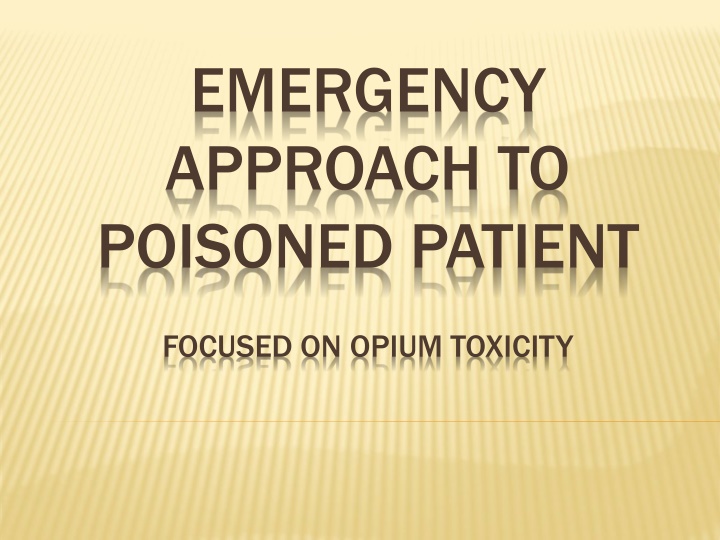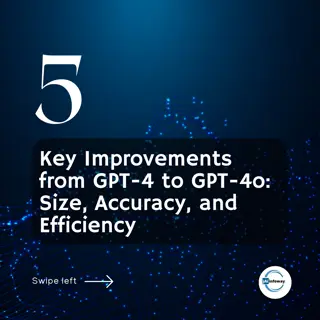
Emergency Approach to Poisoned Patients: Opium Toxicity and Management
Learn about the emergency approach to poisoned patients focused on opium toxicity, including definitions of terms related to poisoning, signs of overdose, how to diagnose a poisoned patient, and the general approach to managing poisoning cases. Discover the importance of emergency management for unconscious patients, providing ventilation, intravenous infusion, and necessary medications like naloxone and thiamine.
Download Presentation

Please find below an Image/Link to download the presentation.
The content on the website is provided AS IS for your information and personal use only. It may not be sold, licensed, or shared on other websites without obtaining consent from the author. If you encounter any issues during the download, it is possible that the publisher has removed the file from their server.
You are allowed to download the files provided on this website for personal or commercial use, subject to the condition that they are used lawfully. All files are the property of their respective owners.
The content on the website is provided AS IS for your information and personal use only. It may not be sold, licensed, or shared on other websites without obtaining consent from the author.
E N D
Presentation Transcript
EMERGENCY APPROACH TO POISONED PATIENT FOCUSED ON OPIUM TOXICITY
DEFENITION OF TERMS Poisoned patient : to injure or kill with poison Poison : a substance that through its chemical action usually kills , injures , or impairs a organism Poisoning : exposure to poison is accidental (children-elderly) Overdose : exposure to poison is intentional suicidal attempt suicidal commitment secondary to drug abuse
in overall a clinical toxicologist should brings in mind following in overall a clinical toxicologist should brings in mind following points if he has suspicion of overdose in comatose Pt : points if he has suspicion of overdose in comatose Pt : Any Pt who comes with abrupt alteration In consciousness level Any young Pt with arrhythmia Any Pt with suicidal and psychic records . Any Pt with drug abuse record. Any Pt who bring in ED with multi system failure of unknown etiology should be suspected of poisoning until proved otherwise Any Pt who had recent familial or social problem especially in young`s. Any Pt who has metabolic acidosis without clear base . Any Pt who was rescued from fire accident Any Pt who was found unconscious in work environment
HOW TO DIAGNOSE A POISONED PATIENT It may be : It may be : 1) To easy to ascertain like a child poisoning with his/her mothers iron tablets ingestion . or an elderly Pt who misreads label , or misuse a drink . 2) To difficult like a youth who was found unconscious in deserted place with unclear history .
THE GENERAL APPROACH TO THE POISONING PATIENT MAY BE DIVIDED INTO SEVEN PHASES : Emergency management Clinical evaluation Elimination of poison from the gastrointestinal tract ,skin , eyes , or the site of exposure in inhalation poisoning Administration of a specific antidote Elimination of the absorbed substance Supportive therapy Observation and disposition 1. 2. 3. 4. 5. 6. 7.
EMERGENCY MANAGEMENT Mostly in unconscious Pts include : 1) Adequate ventilation airway oxygenation - intubations 2) Intravenous infusion with normal saline 3) Continuous monitoring and observation 4) All Pt should given 2mg naloxone , 50cc glucose 50% , 100mg thiamine
CLINICAL EVALUATION History History : thorough medical , psychiatric and trauma history . All records on addiction , current medication , drug overdose , E.D charts , occupational diseases . Clinical : Clinical : All should be done to determine . a) a) extend of poisoning and toxidrome symptoms . underlying diseases , concomitant trauma . b) b) vital signs evaluation hyperthermia : hyperthermia : salcylate , cocaine .anticholinergic hypothermia : hypothermia : hypoglycemia,barbiturate ,other sedative hyp bradycardia bradycardia : : digitalis , cholinergic agents blockers , Ca . Ch . blockers hypertension : hypertension : cocaine , amphetamine , sympathomimetic hypotension hypotension and tachycardia tachycardia is not specific
CLINICAL EVALUATION c) c) Skin signs Diaphoresis : Diaphoresis : organophosphate , carbamate , hypoglycemia . Flushing : Flushing : ethanol , cocaine , anticholinergic . Petechiae Petechiae and and ecchymoses ecchymoses : : coaglupaties . Bullous Bullous lesion : lesion : barbiturate and other agents which obstruct dermal perfusion . d) d) Breath smell Ethanol , cyanide ,petrol , insecticide , ketoacidosis . e) e) Lung auscultation aspiration aspiration pneumonitis pneumonitis: : may seen in all poisoned Pts who were . under gast-asp+lavage action . pulmonary edema : pulmonary edema : TCA , narcotics . wheezing : wheezing : toxic inhalants syndrome . pneumothorax pneumothorax : : trauma .
: Analgesia , euphoria+ complication complication Kappa = Kappa = dysphoria dysphoria spinal Analgesia spinal Analgesia Dellta Dellta = = Analgesia Analgesia antagonist antagonist = = 1 1 Analgesia , 2 2 spinal Analgesia , spinal Analgesia , euphoria+
1 - Respiratory depression 2 - Miosis 3 - Altered mental status 4 -Tolorence 5 - Clinical response to Naloxone
NALOXONE HYDROCHLORIDE . 5 . . 3
: . : 25 50 40 60 5 . : : Nalmefene Nalmefene Naltrexone Naltrexone : .1 .1 .2 .2 . . . : 2 : .1 .1 .2 .2
: .1 .1 .2 .2 .3 .3 .4 .4 .5 .5 .6 .6 .7 .7 Head Trauma Head Trauma Opioid Toxicity Toxicity Co Co- -ingestion ingestion Post Post Ictal Potent Potent Opioid Ictal Sepsis Sepsis

